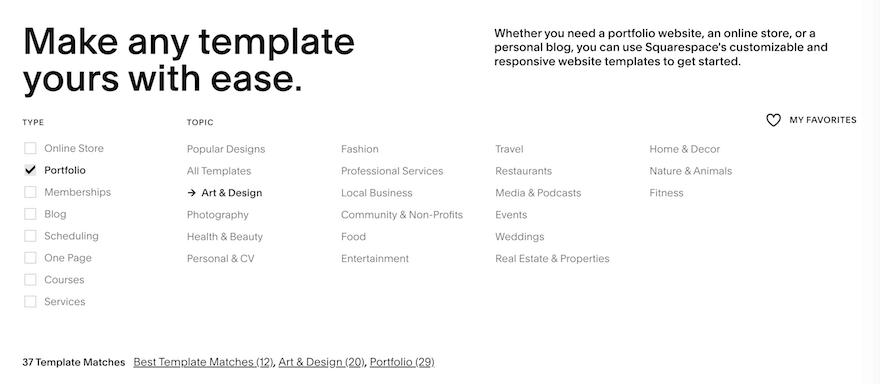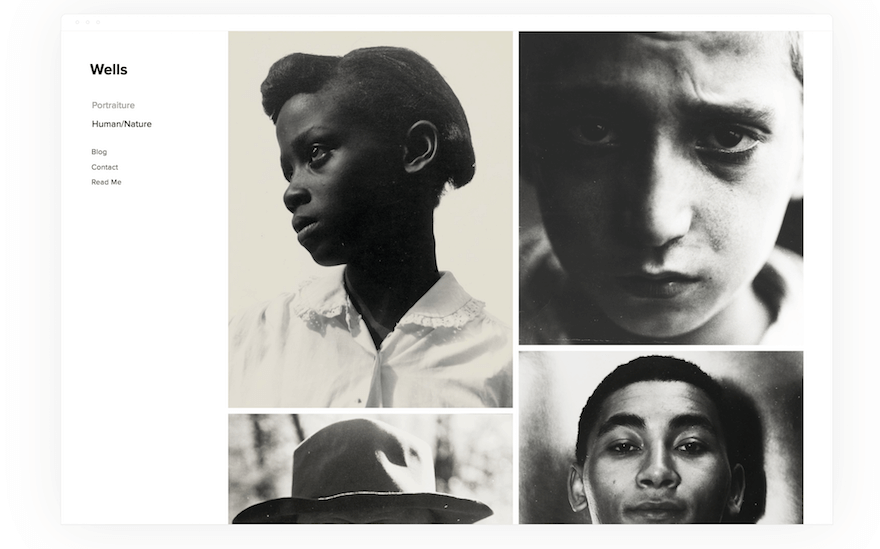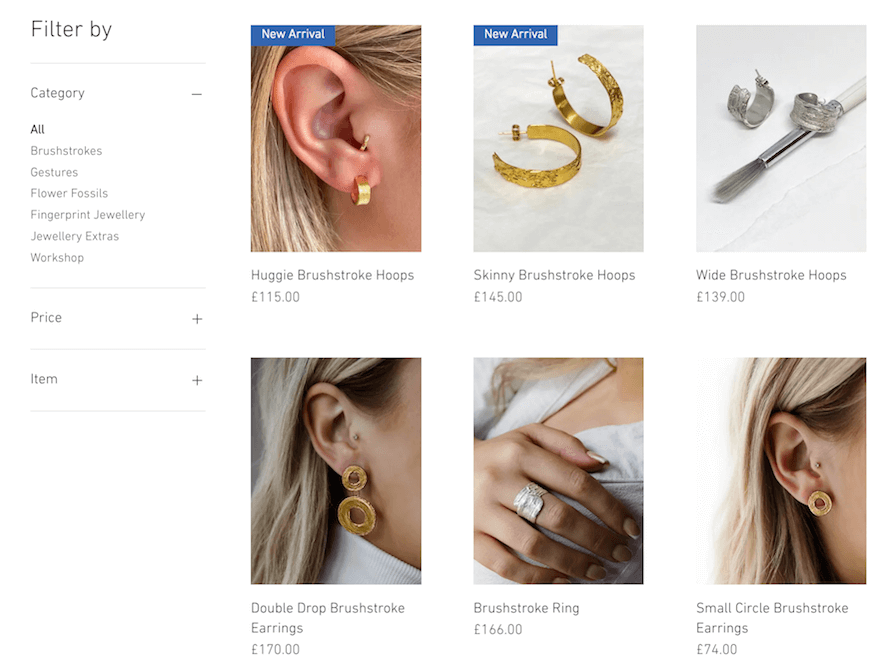How to Make a Stunning Art Portfolio: A Complete Guide
If you click to purchase a product or service based on our independent recommendations and impartial reviews, we may receive a commission. Learn more
Whether you’re building a website to sell your art, impress a college admission committee, or catch the eye of your niche’s top aficionados, you’ll need an online presence to match the high quality of your work. A website builder for artists is a good place to start, but just how do you create a striking art portfolio?
Art is a language that transcends borders, cultures – even time itself. And, as an artist, your art portfolio is your canvas. It’s your gallery, your cave wall; your unique hub of art that channels your unique voice and vision – then communicates it to the world.
In this article, we’ll explain exactly how to make an art portfolio from scratch. From understanding your goals to keeping your online works cleverly curated, we’ll run you through the top seven steps for successfully showcasing your art – in a way that does justice to its finest nuances and themes.
1. Understanding Your Goals
Creating an impressive art portfolio is like painting a masterpiece – it all starts with a vision.
But before you dive into the world of brushes and canvases, you first need to understand your goals. To get to grips not only with how to make an art portfolio, but who your art portfolio is for, and the end goals you’re creating it with: be that college admission, exhibition, or simply commission.
Identifying Your Target Audience
Think of your art portfolio as a conversation between you and your viewers. To make that discourse meaningful, you need to know who you’re talking to.
Your target audience could be diverse, after all – so it’s essential to tailor your portfolio to their unique tastes and interests. You could be aiming your art at:
- Art aficionados: these folks appreciate creativity and artistic expression; they want to see your unique style and watch you experiment with form and function.
- Potential buyers: to showcase your art to buyers, emphasize your most marketable pieces, or at least the ones with broad appeal.
- College admission committees: if your goals are to seek entry into art school, focus on demonstrating your work’s versatility and potential, and showcase a range of skills and styles.
Understanding Your Target Audience
Now you know who you’re speaking to, it’s time to get to grips with how to speak to them.
So dive into the world of your target audience. Explore art forums, embed yourself in social media groups, or visit the top galleries they gravitate towards. This will help you understand their preferences and expectations – and ensure your art portfolio taps into them.
That’s not to say you should completely “sell out” your own unique style based on what others want, or demand. Doing your research early on simply helps you curate your existing portfolio for maximum resonance with the most important people; to include pieces that align with their interests, while staying true, throughout, to your artistic vision.
2. Selecting Your Best Works
Think of creating your art portfolio as if you’re curating your own art exhibition in a gallery – you want to leave your viewers impressed, intrigued; invigorated. To do that, though, you’ll need to carefully select your best works – here’s how:
Curating a Cohesive Collection
Your art portfolio should tell a story – not leave your viewers scratching their heads.
So to ensure cohesion, start by:
- Identifying a theme or concept that ties your works together (it could be a common subject, a recurring style, or even a message you want to convey).
- Ensuring each piece you select harmonizes with that chosen theme or concept. This doesn’t mean all your art has to look the same, but it should feel as though it all belongs in the same conversation.
- Arranging your art portfolio’s works in a way that engenders a visual “flow”. This means considering how one piece leads to the next, and how they interact with one another.
Highlight Your Artistic Strengths and Unique Style
Your art portfolio is your personal platform: a spotlight on your talents and artistic voice.
So, when selecting your best works:
- Don’t be afraid to showcase that unique style – whether it’s vibrant colors, bold brush strokes, or a particular penchant for minimalism, let your personality shine through
- Balance the familiar alongside the experimental – while you should show off your signature style, pushing artistic boundaries can demonstrate your versatility and flair
- Choose a variety of mediums (such as oils, watercolors, acrylics, digital art, or mixed media) and incorporate different styles to display your adaptability
- Include recent pieces to tell the story of your artistic journey and development, and demonstrate that your work is continually evolving and improving
- Focus on quality, rather than quantity – don’t feel the need to cram every piece you’ve ever created into your art portfolio
3. Choosing a Platform
Next up in your journey to learn how to make an online art portfolio? Picking the right platform to build your picturesque presence online.
There are several ways you can do this – you can build a website from scratch, for instance, or on the basic pre-existing infrastructure of a Content Management System (CMS) – but these options tend to require more time and tech-savviness. And, ultimately, end up detracting from the area where you want to spend most of your time – making art!
That’s why we recommend using a website builder. It’s the easiest, quickest, and most convenient way to set up an art portfolio online – then, if you choose to do so, you can start selling through it too.
Of course, not all website builders for artists are created equal – and, according to our in-depth, in-house research, Squarespace is our top choice for artists. It backs an impressive overall rating of 4.7 out of 5 with a design flexibility score of 4.7 – and its huge selection of templates and scope for aesthetic customization make it, hands down, the best website builder for creating a slick, stylish art portfolio online.

Wix scores 4.4 out of 5 for its design flexibility, making it the next top pick. We also rate GoDaddy and Shopify highly, too (the latter, in particular, if you want to sell your art online).
More Information
- Squarespace Review: Everything you need to know about our top website builder for artists
4. Personal Branding, Design, and Aesthetics
Even though Wix and Squarespace allow you to build your site upon the design infrastructure of their leading artist website templates, there’s still plenty of room for customization. You’re an artist, after all, so ensuring your art portfolio is a vivid reflection of your personality – and your art’s – is a must.
To build a striking online presence in the mold of your distinct look and feel, try:
- Choosing a clean, uncluttered layout. White space is your friend!
- Ensuring design consistency, with the same set of colors, fonts, and visual elements used throughout.
- Selecting a color palette that complements your artwork. If you dabble in vivid, in-your-face colors as an artist, take a similar tack with your website design – or go in the opposite direction, and keep your site monochromatic and stripped-back to let the artwork do the talking.
- Harness the power of storytelling not just with pictures, but with words– adding copy strategically to convey your artistic statement, and write a bio (also known as an “About Us” page) to allow your audience to get to know the person behind the paintings.

5. Showcasing Your Artwork
You’ve come this far in learning how to make an art portfolio – so, when it comes to adding your actual art to it, you need to keep your eye firmly on the ball. You want to show off your art in a way that maximizes its aesthetic and thematic impact upon the hearts, minds, and eyeballs of your audience.
To do this right, there are a few strategies you can employ:
- Invest in a high-quality, high-resolution camera to capture every nuance of your artwork – and use a tripod to avoid shaky hands and keep the images crisp and clear.
- If possible, employ a macro lens or feature on your camera to capture even the tiniest of details with precision; and use close-ups to capture your art’s intricacies.
- As you snap, experiment with depth of field to highlight specific elements of your work – sometimes, a slightly blurry background can make the subject stand out.
- Shoot in natural light, avoiding direct sunlight and harsh shadows – and set your camera’s white balance to accurately match the lighting conditions.
- Capture your art from multiple angles to give it depth, and grab contextual shots to show off your artwork’s relationship to others it’s thematically linked to.
- Use image editing software – such as Lightroom or Adobe Photoshop – to fine-tune the colors, contrast, and sharpness of your artwork’s images.
The better the quality of your images, the better your art portfolio will look. This also lends itself to when you want to start showcasing your art for commercial purposes and selling to your audience. Take a look at the example below, from Becca MacDonald Studio, for inspiration:

Find Out More
- See how other artists have showcased their work in our selection of the Best Painters Websites!
- Want to showcase your art beyond your website? Our rundown of the Best Social Media Platforms for Artists is a good place to start.
6. Incorporating Multimedia Elements
Your art portfolio shouldn’t be confined to static images alone.
So spice things up by incorporating multimedia elements to imbue your portfolio with a fresh, dynamic breath of air – and tell your art’s story in a way that captivates and compels.
To do this, experiment with:
- Recording time-lapse videos of your creative process – mesmerizing viewers as you turn a blank canvas, stroke by stroke, into a vibrant masterpiece. Adding narration via voiceover or captions to explain your techniques, inspirations, and creative choices can deepen the personal connection between your art and its audience.
- Creating demo videos showing the world how you manipulate glass, metal, or any other medium to bring your vision to life. This is especially handy if you regularly work with unconventional materials and techniques.
- Capturing your sculpture or installations from every angle with 360-degree photos, then embed them in your online art portfolio: allowing viewers to spin, zoom in on, and play with images of your artworks to explore their every nook and cranny.
- Designing virtual art galleries to showcase your art online, allowing visitors to navigate through the digital space via a similar method as they would in a physical one.
- Exploring Augmented Reality (AR) to allow viewers to interact with your art, in real-time, through an AR-enabled smartphone app.
7. Keeping Your Art Portfolio Updated
Remember, a good art portfolio shouldn’t simply tell your audience how good an artist you are – but tell a story, too.
Your art portfolio needs to showcase your evolution and growth as an artist – to paint not only a literal picture but an allegorical one of your development and journey.
This means it’s vital to keep your art portfolio up to date – regularly adding new works and removing outdated pieces that no longer reflect your shifting interests and ideals. This will help ensure your portfolio stays relevant over time, and that it’s the most accurate representation of your passions and proclivities.
Fortunately, website builders such as Squarespace and Wix make this easy. You can drop new photos in with a click, and drag them around with your cursor to re-order them.
It’s simple, and you can be up and running in moments – why not give it a try today?
How to Make an Online Art Portfolio: Summary
Here, we’ve provided everything you need to embark on a new creative journey – one that doesn’t involve creating your art but putting it on a platform where the world can appreciate it.
From understanding your goals and audience to incorporating multimedia elements, you’ve covered the entire canvas of art portfolio creation (and it’s looking good!).
But, before you head off to start building, remember that your art portfolio is your voice in an artistic world that’s already noisy with them. To stand out, you need to stay true to your artistic voice, keep honing your craft, and stay open to growth and experimentation. Your portfolio is a living, breathing testament to your evolution as a creative – and it needs to inspire and captivate your audience.
Your portfolio should speak volumes about your passion for art, dedication, and unwavering commitment to creativity. Your art deserves to be celebrated – and your portfolio is the life of the party. So go get involved – and have fun!

Leave a comment